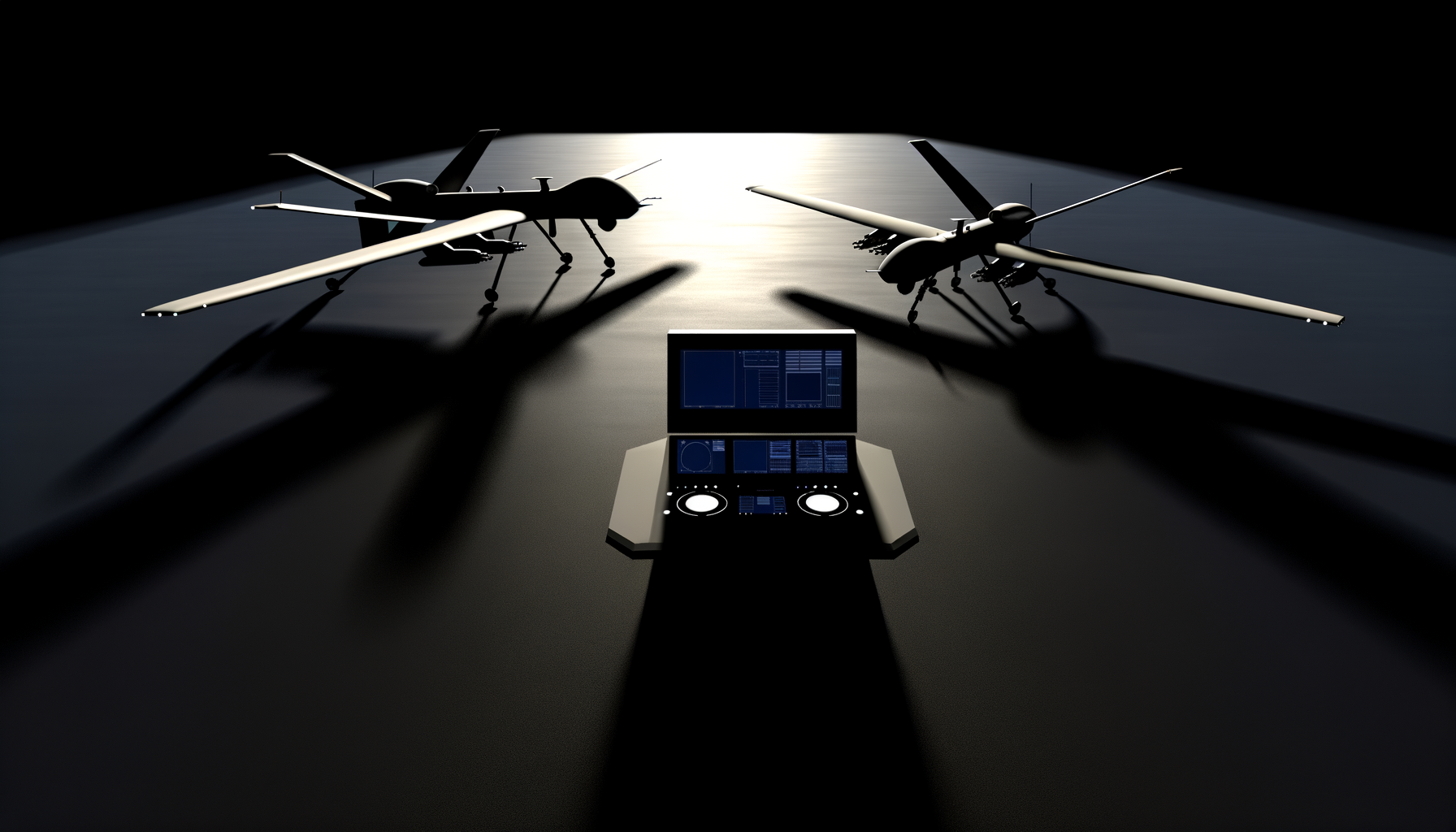What if your adversary’s next move was predicted, countered, and neutralized before you even sensed it was coming? The era of isolated military AI is ending, and those who aren’t prepared will be outthought—not just outmaneuvered.
The Dawn of Truly Collaborative Military AI
For decades, military artificial intelligence was bounded by silos—individual platforms crunching data sets in isolation, priorities diverging across branches and allies. That era is over. We enter a new epoch where collaborative AI platforms don’t just connect—they synchronize, fusing intelligence, surveillance, targeting, and logistics into one seamless digital chain of command.
Why Interoperability Is No Longer Optional
The traditional assumption of AI superiority—faster sensor data processing, automated target classification, or sophisticated wargaming—is rapidly outdated. In contemporary conflicts, where minutes (sometimes seconds) dictate survival, interoperability unlocks possibilities that no standalone AI can achieve.
The next military edge isn’t a smarter algorithm—it’s a framework where many AI ‘brains’ think together, compressing command cycles from days to seconds.
STAR.OS and the New Playbook
Lockheed Martin’s recent introduction of STAR.OS typifies this shift. No longer is the focus merely on building better algorithms; the goal is to forge adaptive neural networks capable of instant communication and collaborative targeting across disparate assets, legacy systems, and even coalition partners.
- Adaptive Data Sharing: STAR.OS and similar platforms break down stovepipes between aerial, naval, and ground systems, allowing them to swap context, intent, and situational awareness on-the-fly.
- Human Operator Empowerment: Rather than wrestling with multiple dashboards, commanders receive precise, actionable insights distilled from all assets, focusing their cognitive energy where it counts most.
- Autonomous Coalition Coordination: AI systems rapidly negotiate roles in-theater, assigning sensors and effectors as the real-time environment evolves, not through pre-scripted tasking but through instantaneous consensus.
The Principle of Decision Compression
In legacy operations, OODA loops—observe, orient, decide, act—could stretch for hours or even days as data bounced between units and headquarters. Collaborative AI collapses these timetables.
Decision compression means sensing, fusing, reasoning, and acting in the time it takes a single adversary message to reach its recipient.
Imagine a scenario where an enemy missile launch is detected by a satellite; the warning is cross-referenced with drone ISR and ground radar, AI assigns threat priority, and intercept strategy is disseminated to naval, air, and cyber teams—all inside seconds. This is no theoretical possibility; proof-of-concept exercises with STAR.OS have demonstrated tactical coordination at this scale and speed.
Tactical Superiority: From Promise to Reality
The ramifications are profound:
- Emergent Behaviors: Swarms of drones or semi-autonomous vehicles act in fluid, coordinated ways that cannot be anticipated or preempted by any single AI adversary.
- Cumulative Intelligence: Every sensor input instantly sharpens the collective battlespace picture, allowing for adaptive, dynamic targeting that leaves static doctrines behind.
- Simultaneous Multi-Domain Spin-Up: Attacks, countermeasures, and logistical deployments can be synchronized not just across the joint force but with allied systems, unleashing effects globally in near real-time.
Barriers No One Talks About
Yet the move to collaborative AI is not turnkey. Major hurdles remain—technical, organizational, even cultural.
Data Standards and Legacy Inertia
Most military organizations operate with decades-old data architectures, incompatible interface protocols, and security postures designed for an analog age. Achieving real interoperability demands arduous, systemic refactoring—and this isn’t a one-off migration, but a continuous process.
Trust in Machine Consensus
Perhaps the darkest horse is the human factor. As AIs begin to make and execute tactical decisions with minimal human review, commanders must place trust not just in their own algorithms, but in the emergent ‘hive mind’ consensus of frameworks like STAR.OS. The psychological leap is immense.
Adversarial AI and Security
With information flowing rapidly and freely among friendly AIs, the system’s attack surface expands dramatically. Adversaries will target weak links, attempt injection of corrupted or misleading data, and exploit cross-system vulnerabilities. Security paradigms must advance as rapidly as the underlying AI.
Blueprint for Adaptation: Steps to Enable Collaborative AI
Unlocking the full benefits of collaborative AI requires more than technical procurement. Here is a distilled action plan for leaders serious about gaining— and keeping—a tactical AI edge:
- Audit and Modernize Data Infrastructures: Identify where legacy communications hinder interoperability. Prioritize open, machine-readable standards as the basis for next-gen command systems.
- Architect for Plug-and-Play Expansion: No platform will be futureproof. Design interoperable systems with modular APIs and dynamic schema negotiation, ensuring new assets and allies can plug in instantly.
- Institutionalize Human-Machine Symbiosis: Build training regimes that focus on trust calibration—teaching operators when to step in, and when to let synchronized AI handle execution.
- Prioritize Adversarial Threat Modeling: Extend red-teaming to focus on the vulnerabilities of collaborative AI—both technical and psychological attack vectors.
- Experiment with Coalitional Interoperability: Use live exercises to validate cross-nation AI collaboration at scale—not just point-to-point, but mesh-level, resilient synchronization under threat.
Redefining Command—Ethics, Control, and Contingency
Pure speed brings risk: What happens if synchronized AIs agree on a flawed consensus or misinterpret ambiguous intent? Oversight mechanisms—ranging from cryptographically verified decision logs to embedded ethical guidelines—must be built in alongside real-time monitoring. Commanders must retain the ability to disrupt or recalibrate global AI networks in the event of cascading error or hostile compromise.
Conclusion: The Real Future Is Interconnected
The key question is no longer who can build the best AI model, but who can orchestrate a digital command ecosystem where every asset, every nation, every operator, and every autonomous platform can trust and collaborate with every other in real time. If your AI strategy lacks a collaborative foundation, it is already obsolete.
The era of solitary algorithms is over; dominance now belongs to those who can synchronize intelligence, decision, and action—across every domain, every partner, every second.





